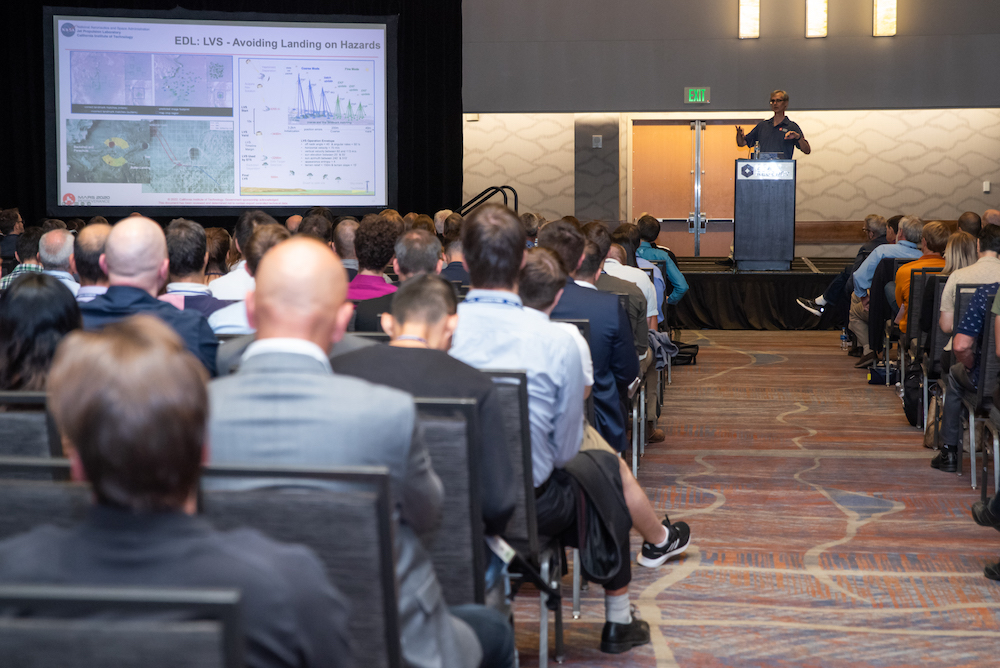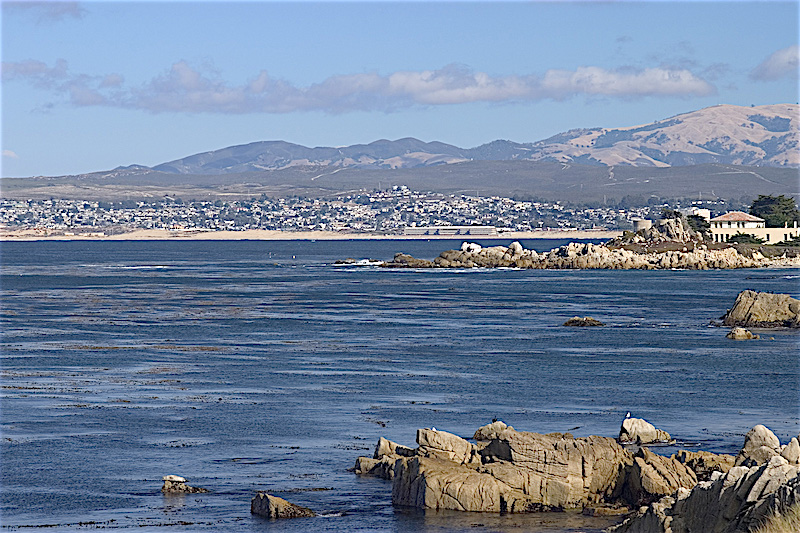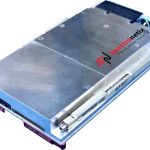The ION GNSS+ 2022 plenary session covered the challenges of achieving precise PNT to allow for exploration in two remote locations: at sea and on Mars.
Mike Korotinsky, director, satellite and communications operations for Ocean Infinity, and Dr. Michael McHenry, robotic systems, JPL/NASA, presented the keynote addresses in Denver.
Korotinsky began the evening with his talk, “Application of GNSS for Marine Robotics.” Ocean’s Infinity mission, he said, is to create and use innovative technology to find cleaner and safer ways to operate vessels at sea.
The team is currently focused on developing a fleet of uncrewed robotic ships, called Armada, that generate zero omissions. Tasks typically handled by humans onboard the ships will be automated, and the ships operated remotely from locations around the world—reducing the number of crew that need to take on dangerous missions at sea.
Once they reach their destination, these ships will deploy underwater vehicles like AUVs and tethered ROVs to perform specific tasks, such as surveying work. Of course, navigating those vehicles underwater where GNSS doesn’t reach presents a unique set of challenges.
During the presentation, Korotinsky detailed various navigational technologies, such as DVL-aided INS, and how they can be used to achieve precise positioning.
McHenry’s presentation, “Navigating on Mars,” took attendees through the Perseverance Rover’s journey on Mars to collect samples, sharing images collected, the path traveled, instruments used and the navigational challenges that come with operating a rover on another planet.
The rover is autonomous, receiving commands every morning for that day’s work. Imagery is core to navigation, giving the team back on Earth a 360 degree view of the terrain around the rover, which is often fairly rough. The rover uses images to detect and avoid hazards to ensure it gets to each way-point, registering data collected against an orbital map.
The rover’s landing vision system, an enhancement over the previous version, provides a refined estimate of where the spacecraft is and a map of which areas are the most and least risky to travel. This was critical during Perseverance’s landing on Mars, as it ended up needing to make a course correction to avoid a potential issue.
After more than a year of exploration, the mobility system continues to perform well, McHenry said. It has collected 15 samples for scientific study in that time. Those samples will eventually be sent back to Earth for closer investigation. The rover is part of a bigger sample return campaign.
ION GNSS+ 2022 continued throughout the week with presentations covering various PNT topics of importance, including augmentation services, integrity and authentication, alternative navigation, autonomous applications, GNSS authentication and anti-spoofing, urban and indoor GNSS, and sensor network and cooperative navigation.
This year’s conference, held in Denver, had in-person attendance close to 2019 levels, with participants welcoming the opportunity to network face to face. Attendees sat in on presentations and panels throughout the week, with many of the session rooms close to filled, and had the chance to explore the exhibit hall on Wednesday and Thursday. Exhibitors included CAST Navigation, GPS Networking, Hexagon | NovAtel, Navtech GPS, Silicon Sensing Systems, Syntony GNSS and Labsat, to name a few.
Some companies came to the conference fresh off new product or service announcements, including Lockheed Martin’s recent agreement with the government of Australia to establish the Southern Positioning Augmentation Network (SouthPAN), Orolia’s new GSG-7 simulator and Unicorn’s next generation high-precision GNSS modules, distributed by RX Networks.
There were plenty of opportunities for networking during the conference, including a jam session with ION members performing to a packed crowd of colleagues at the Hard Rock Cafe, co-sponsored by Inside GNSS, and a volunteer luncheon where attendees built and raced small race cars, also sponsored by Inside GNSS.
ION GNSS+ 2023 is set for September 11 to 15 at the Hyatt Regency Denver at Colorado Convention Center.
Photo credit: Melanie Awbrey.






